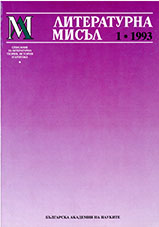

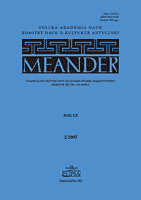
Keywords: Greek literature; Archilochus; Sappho; papyri
The author presents the new fragments of Sappho (P. Koeln 21351 + 21376) and Archilochus (P. Oxy. LXIX 4708), gives a short review of the research to date, makes some textual and intepretative suggestions of his own, and adds an apparatus criticus to the text of Sappho proposed by Gronewald and Daniel. At the end of the first fragment of Sappho (line 8), he reads qala/mois a)ei/dw ('nuptias cano'), which, as a periphrastic generic term, together with a possible mention of the poems for the girls in the lost part of the same line, would cover the whole field of Sappho's poetry. In line 18 of the Cologne papyrus (i.e., line 10 of the second poem), he reads the fifth letter as phi (following West), but then puts forward an entirely new reading of the rest of the disputable phrase, suggesting e)/rwi fi/la qei=san ('amori indulgentem'); if the fifth letter is delta (the reading the Cologne papyrologists strongly insist upon), he alternatively proposes de/ma qei=san. As to the new Archilochus, in the author's opinion it is unlikely that lines 21-25 (in which Hercules' name appears) allude to Telephus' flight from the enemy, since the function of the whole exemplum is exclusively to extol the success of that hero.
More...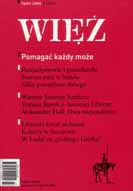
Tadeusz Rolke w aż nazbyt pokomplikowanym świecie współczesnej fotografii potrafił zawsze iść własną, osobną drogą. Dzięki temu osiągnął prawdziwą oryginalność i zdołał sfotografować to, co najważniejsze – prawdę czasu i człowieka.
More...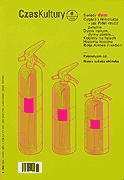
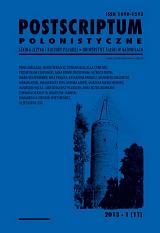
Keywords: Europe, history, Judaica, nation, Polish Studies
Texts that either come from Poland or are used in thinking about Poland can sometimes be very useful in research and discussions that go far beyond the traditional formula of Polish Studies. The author of this article suggests four disciplines for research: the concept of history, Europe, nation and Judaica. Polish texts are needed in these fields and reading them is often essential. Polonists are generally not fully aware of the importance of Polish texts in such contexts and the number of translations of many important Polish texts is still insignificant. The author of the article postulates a change in Polonists’ perspectives.
More...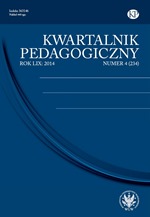
Keywords: “The Pedagogical Quarterly”; Pasierbiński; Dawid; Suchodolski; Department of School Organisation Theory
The article is a discussion of the work of Professor Tadeusz Pasierbiński published in “The Pedagogical Quarterly” in the years 1960–1966.
More...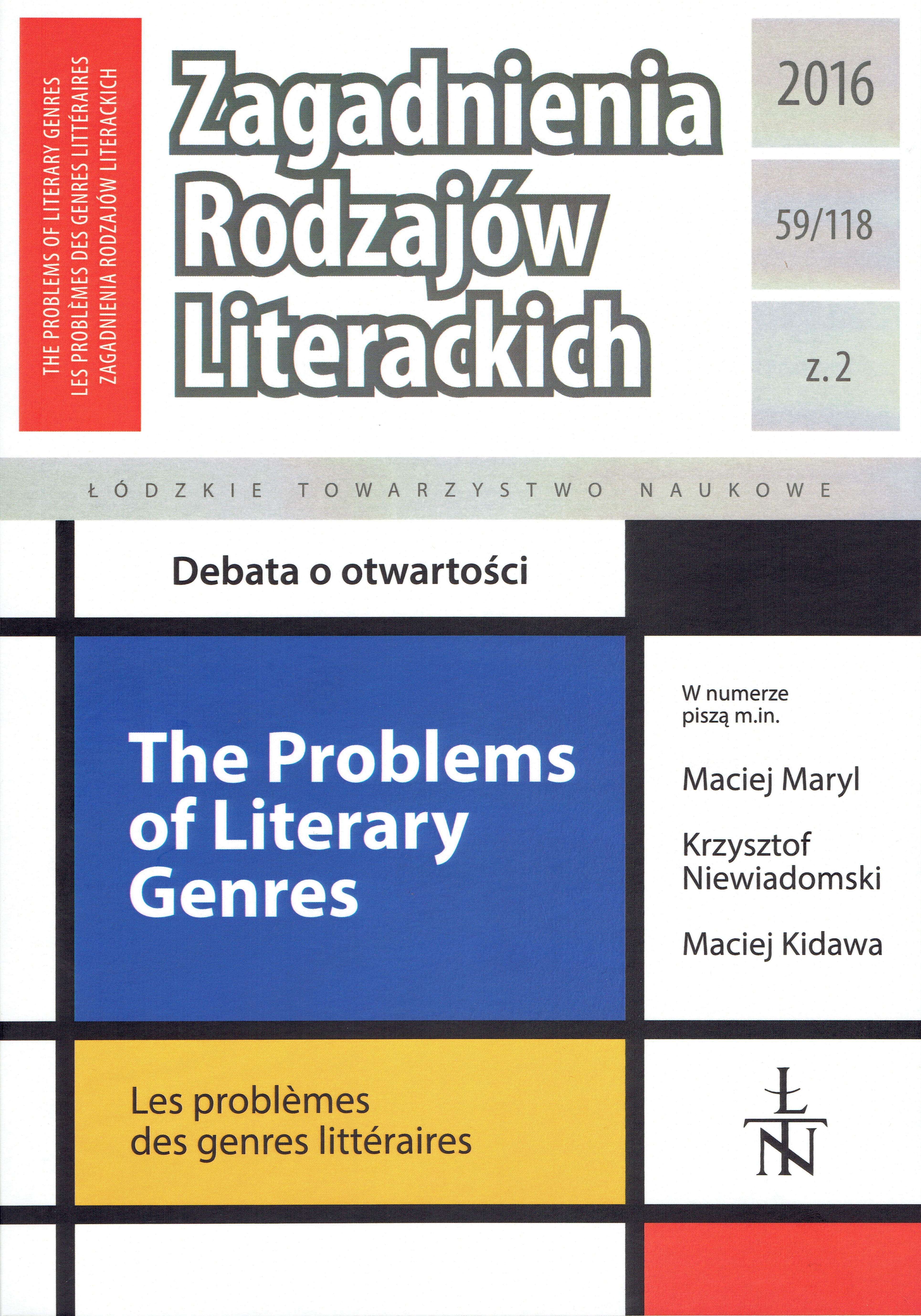
Keywords: blog; genre; genre as social action; grounded theory; electronic discourse
This paper aims to search for the traces of how the meter of lai interferes or cooperates with the form of a litany. The research will be conducted on the basis of medieval French literature from first paraphrases of litanies in vernacular language to popular literary genres like for instance roman, dit, alba to lai included in Mélusine of Coudrette. The question of infinity of the form of litanies — which are the forms established on the repetition and the enumeration — is raised with the conclusion that when the lai differs from the rest of a literary work by the metrical pattern, the sign of the end of the structure, in other examples relatively weak, becomes evident.This article presents an empirically generated typology of weblog genres based on the analysis of 322 popular Polish blogs. The analysis was informed by Carolyn Miller’s (1994) concept of genre as social action and was focused on three aspects: (1) subject of utterance or exigence; (2) author and communication; (3) genre coherence. Following genres are proposed and discussed: criticism, advice, diaries, modelling, reflection, information, filter, and fictionality.
More...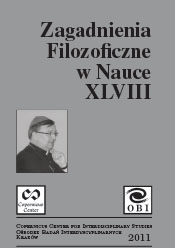
Keywords: dialectics; Galileo Galilei; rhetoric;
The Assayer of Galileo Galilei is a classical text of the Italian literature. It was written in the context of discussions on comets and is a response, word by word, to the Libra astronomica ac philosophica signed by Lotario Sarsi but in fact written by Orazio Grassi. From the formal (i.e. rhetorical) point of view the Assayer is an example of the judicial, defensive speech. However, in the book one can also see the presence of the epideictic speech. The epideictic speech praises the methodological values of the Copernican vision of the universe, and blames those involved in the Aristotelian and Ptolemaic approaches. In the sixth section of the Assayerthere is a famous group of four rhetorical periods in which one can notice the presence of the new interpretation of the antique metaphor of the book. The rhetorical exercise developed in this essay tries to disentangle the complex node of this metaphor and gives its new interpretation. It seems that for Galileo the metaphor is not a trope but passes to the topica. At the end some considerations on dialectics of Galileo are also proposed.
More...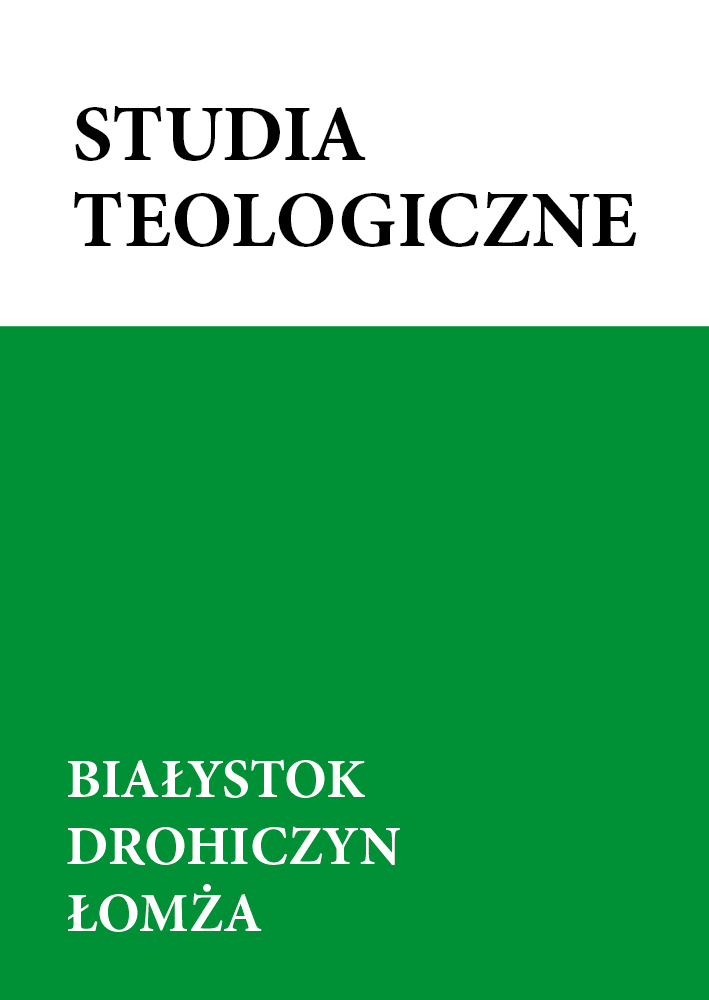
Der Aufsatzl bezieht sich auf die sog. „israelitischen Erzählungen“ von Marek Hłasko, in denen der Schriftsteller die Wirklichkeit ohne Illusion darstellt und ewige Sehnsüchte des Menschen nach Liebe, Freundschaft, Wahrheit und Wohl zeigt. Oft ist das eine verzweifelte Sehnsucht. In seinen Gestalten- und Weltkreationen weist der Verfasser auf Symbole zurück, die mit der christlichen Kultur eng verbunden sind. Dadurch gewinnen seine Werke einen universalen Charakter. Das Bezeichnen der Menschen mit biblischen Namen oder das Einfügen des plötzlich erscheinenden Kreuzes in der Beschreibung des blühenden Apfelbaumes, des reinigenden Regens und des treuen Hundes bekräftigt die Bedeutung der menschlichen Entscheidungen, Haltungen und Gesten, heiligt sie und gibt ihnen einen Sinn.
More...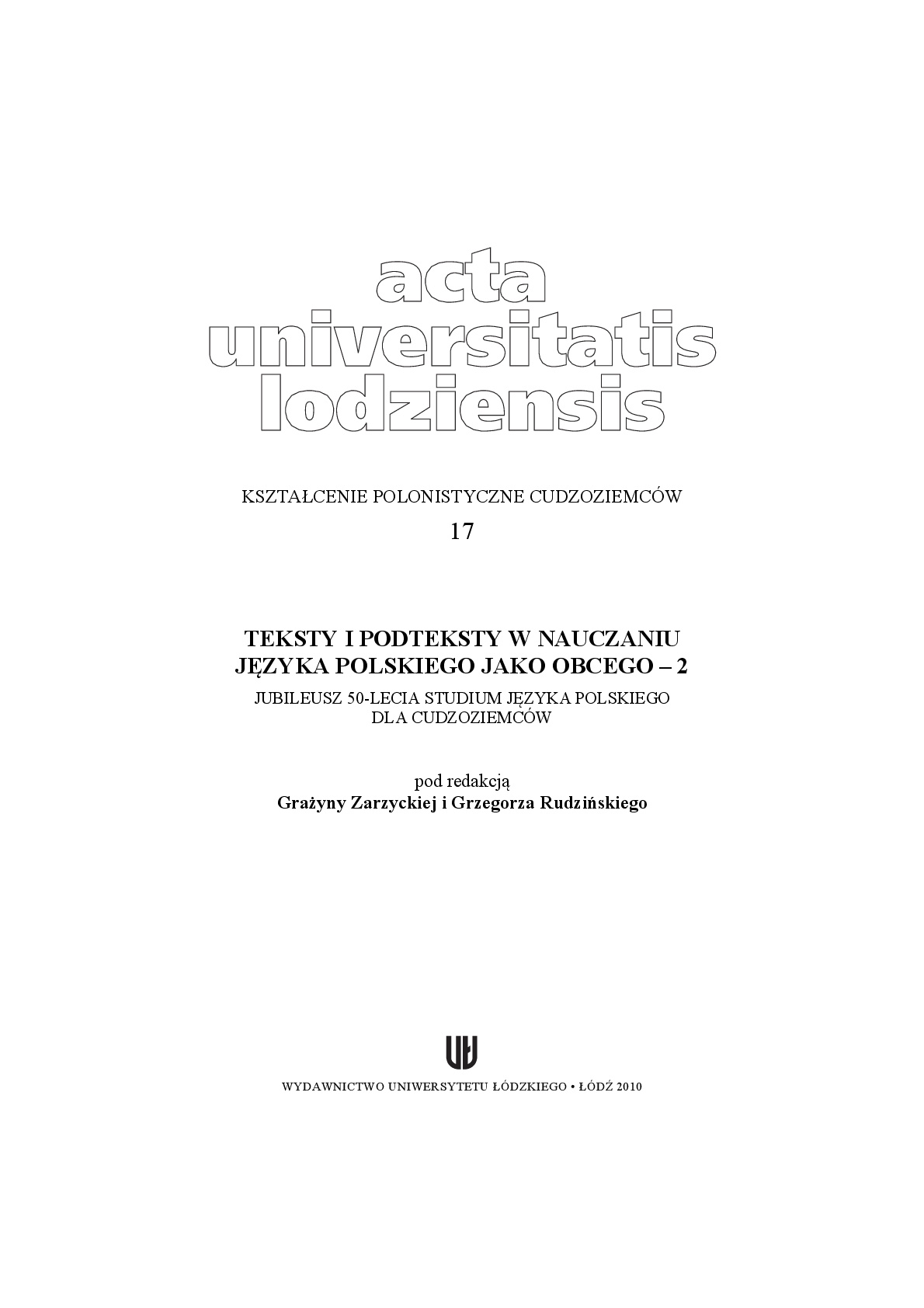
Keywords: Regional texts; teaching foreigners;
Region jest tekstem. Jak każdy tekst jest spójny. Trzeba dostrzec wyznaczniki jego spójności. Trzeba je umieć wykorzystać w nauczaniu.
More...
Keywords: text; subtext; context;
Nauczanie aspektu oraz przyswajanie go to jeden z bardziej skomplikowanych obszarów w gramatycznym nurcie glottodydaktyki polszczyzny. Dzieje się tak z kilku powodów. Jednym z nich jest niepełny opis zjawiska aspektu w gramatyce polskiej. Już na etapie definiowania, czym jest aspekt – jakiego typu kategorią językową i językoznawczą – spotykamy się z wielością ujęć albo specyficzną asekuracją wobec ustosunkowania się do tej kwestii. Ogólnie rzecz biorąc, w różnych opisach gramatyki polszczyzny znaleźć można takie określenia aspektu, jak: kategoria gramatyczna, kategoria gramatyczno- -semantyczna, kategoria semantyczna oraz kategoria kognitywna (por. m.in.: Morfologia 1999; Nagórko 2000; Bańko 2002). Tę ostatnią koncepcję, z punktu widzenia jakiejkolwiek skuteczności procesu nauczania i uczenia się, należy odrzucić. Inaczej bowiem lektor postawiony byłby a priori wobec porażki dydaktycznej: „naucz się myśleć jak mówiący po polsku, a wtedy opanujesz i użycie aspektu”. Nie przekreśla to oczywiście dociekań co do intencji osoby mówiącej jako jednego z analitycznych – choć pozornie mało aktywizujących studenta w tzw. produkcję wypowiedzi – sposobów przyswajania i aspektu, i innych kategorii językowych.
More...
Keywords: Polish grammar textbook; texts;
We współczesnej glottodydaktyce teza o konieczności uczenia się gramatyki poprzez teksty nie jest już podawana w wątpliwość. Teksty literackie zostały np. pomysłowo wykorzystane w podręczniku Wybieram gramatykę! Małgorzaty Kity (1998). W licznych podręcznikach kursowych, adresowanych do obcokrajowców uczących się języka polskiego, ćwiczenia gramatyczne również są prezentowane w formie tekstów różnych typów. Są to najczęściej teksty spreparowane, ale także adaptowane lub autentyczne – literackie, publicystyczne, popularnonaukowe oraz inne. Takiego właśnie podejścia „tekstowego” wymaga funkcjonalnie ukierunkowane nauczanie gramatyki.
More...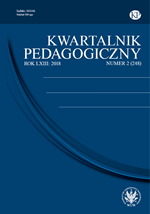
Keywords: Henri Bergson
More...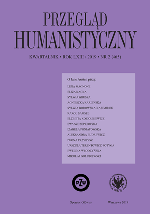
The article is a comparative study of Sense and Sensibility by Jane Austen and the contemporary novel by Emma Tennant Pemberley, which is a continuation of the story of Austen’s characters. Tennant enriched the description of certain protagonists of Sense and Sensibility; for example, the new information about Elizabeth come from the sources which are connected to the biography of Austen herself (letters, memoirs). The theoretical background of the paper is based on research of A. Fulińska, A. Stoff etc.
More...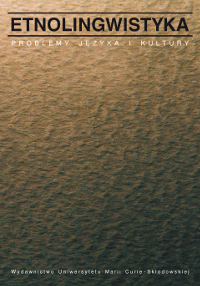
Keywords: Valdimir Toporov; structuralism; Moscow-Tartu semiotic school; Proto-Slavic myth; hypertext; structural-semiotic cultural studies
The article presents the life and work of Vladimir Toporov (1928--2005), one of the most distinguished Russian scholars of the 20th century, a philologist, linguist, literary analyst, folklorist, a student of Indo-European and Slavic ancient heritage, mythology and religion, a semiotician, theorist of culture, philosopher, the author of fundamental works in Baltic studies (among others, a five-volume dictionary of Prussian), Indian and Balkan studies or classic philology. Born in Moscow, Toporov worked all his life at the Institute of Slavic Studies of the Academy of Sciences, together with other distinguished scholars, such as Vyacheslav Ivanov, Nikita Tolstoy, Oleg Trubachev, Vladimir Dybo or Andrey Zaliznyak. The names of Toporov and Ivanov are associated with the development of structuralism in Slavic studies and the emergence of the famous Moscow-Tartu semiotic school. In their work they proposed a reconstruction of the proto-Slavic mythological text, the so called “basic myth”, about a struggle of the “master of thunder” with chthonian creatures. The author indicates and analyzes key concepts, such as time, place, thing, act, thought, word, number, name, sanctity, fate, which unite the whole rich legacy of the scholar into a single “hypertext”. A special meaning was given by Toporov to the conception of text. He extended it beyond the narrow philological (verbal) meaning and associated it with a specially organized semantic sequence of signs of a different kind: sounds, gestures, colours, pictures etc. Text, whose constitutive feature Toporov identified to be SENSE, became the major object of structuralsemiotic research on culture.
More...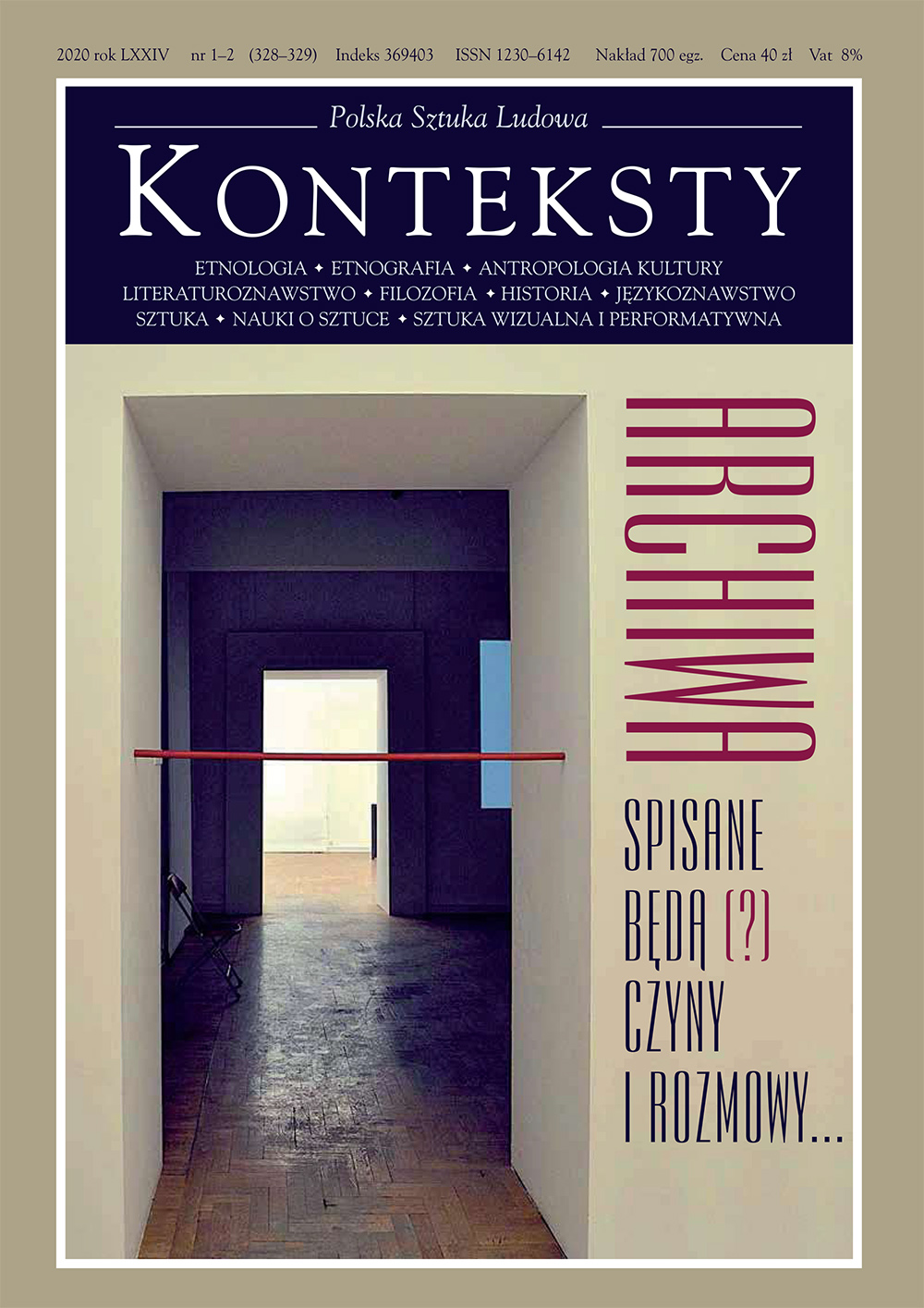
Keywords: Shoah;memory;archive
The author treats the rescued documentation of the Ringelblum Archive as specific testimony. Nowhere in occupied Europe, and in no concentration of a Jewish population existing in the conditions of German terror was a documentation initiative undertaken on such a scale. Thanks to a group led by Emanuel Ringelblum, which called itself “Oneg Shabbat” (i.e. Joy of the Sabbath, from the day on which it usually met) there emerged an archival collection created according to strict methodological principles and realised as a research project by a team of professionals and representatives of science, literature, and culture as well as social activists. The phenomenon of the Ringelblum Archive, however, does not consist exclusively of its historical, cultural, and symbolic value. Testimonies collected while risking life were concealed in the ground. Their authors speak to us via their writing, because that too enjoys the rank of evidence testifying not only by means of that, which it transmits, but also the fact that it survived and exists, and the way it looks. The substance of the testimony, its texture, the paper on which it was written down, and handwriting are of absolutely key importance for the Ringelblum Archive. The discovered and unearthed texts successfully passed the test of four elements: fire – in the blazing ghetto and the fire of the Holocaust; earth – into which they were cast as seed sown for a future harvest; water – telluric dampness, underground streams dissolving and destroying the records, but also water submerging them in the whirlpools of oblivion; and, finally, air – discovery, liberation from darkness, extraction into daylight.
More...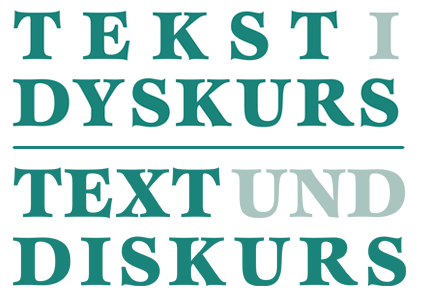
Keywords: minimal text; genre; genre studies; multimodal genre studies
The aim of the work is to reflect on the essence of such texts as bus tickets, banknotes, postage stamps, receipts, street signs, and credit cards, which I define as minimum texts. On the one hand, I am interested in the question of what research potential lies in the analysis of minimum texts from a genological perspective and, on the other hand, what analysis criteria and categories from the field of genre studies could be relevant for the analysis of minimal texts. I will try to explain by means of a few examples how I define minimal texts and what I see as the value of this category in answering the questions raised above and outlining the deiderata of integrated multimodal text type linguistics.
More...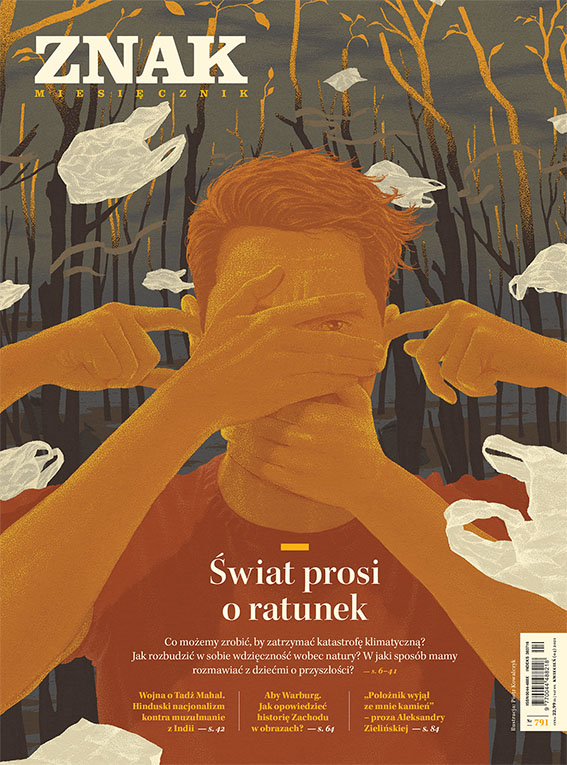
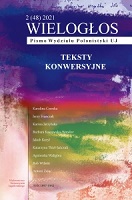
Keywords: conversion texts; conversion novel; John Maxwell Coetzee; Olga Tokarczuk; Richard Powers; philosophical fiction; protreptic; rhetoric of conversion;
The aim of the paper is to shed light on a specific current of conversion novels gaining popularity in the most recent literature, written at the beginning of the 21st century. Heretofore such texts used to be compared to the modern novel of ideas or philosophical fiction. However, such identifications are not adequate and precise enough for new texts, exemplified first of all by the novel Elizabeth Costello by J.M. Coetzee. Instead, an attempt is made to reveal the links of this trend to the much older tradition of conversion texts stemming from Hebrew prophetic texts and Greek protreptic writings. Yet, the analyses carried out in the article focus on emphasizing a separate identity of the contemporary texts, which not only adhere to the conventional schemata of conversion texts, but first and foremost problematize the very phenomenon of conversion rhetoric.
More...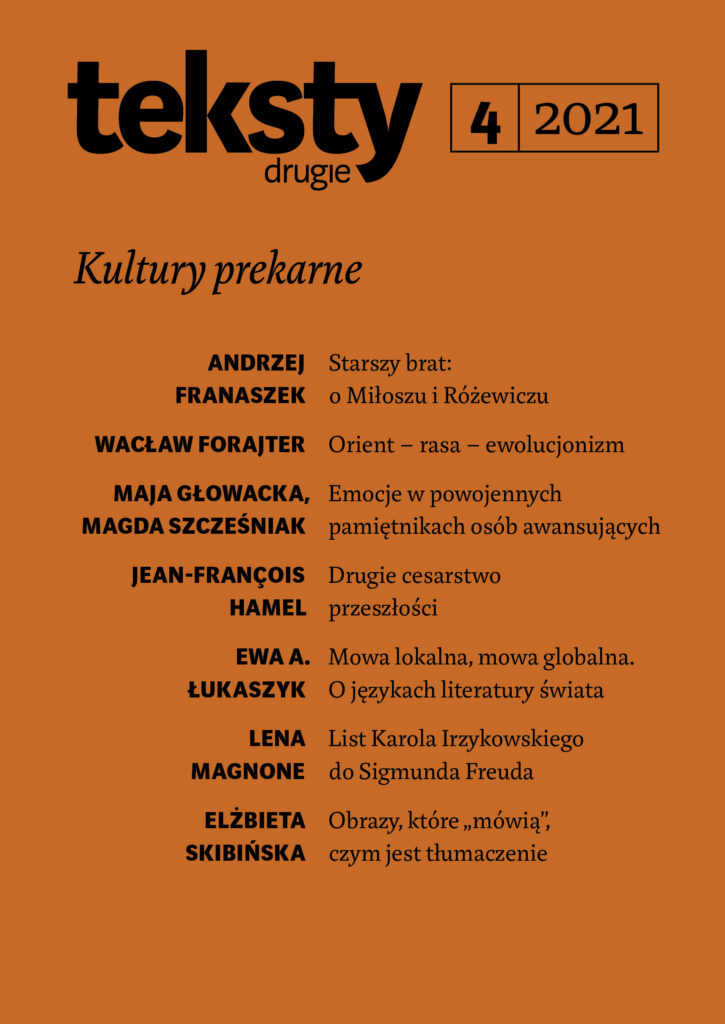
Keywords: narrative; antinomies; aporia; hauntology; anachronism; presentism; materialism; eventuality
In this chapter from the book Revenances de l’histoire: Répétition, narrativité, modernité[Revenants of History: Repetition, Narrativity, Modernity] Hamel discusses contradictionsand logical or historical antinomies in Karl Marx’s work. Examining Marx’s emancipatoryand revolutionary project he takes into account the crisis of the historiosophical narrative,the emerging immanence and historical materialism, as well as the crisis of the legitimacyof modern sciences. Hamel draws on anti-humanist criticism à la Louis Althusser andJacques Derrida’s hauntology as well as concepts of anachronism and methodologicalpresentism.
More...